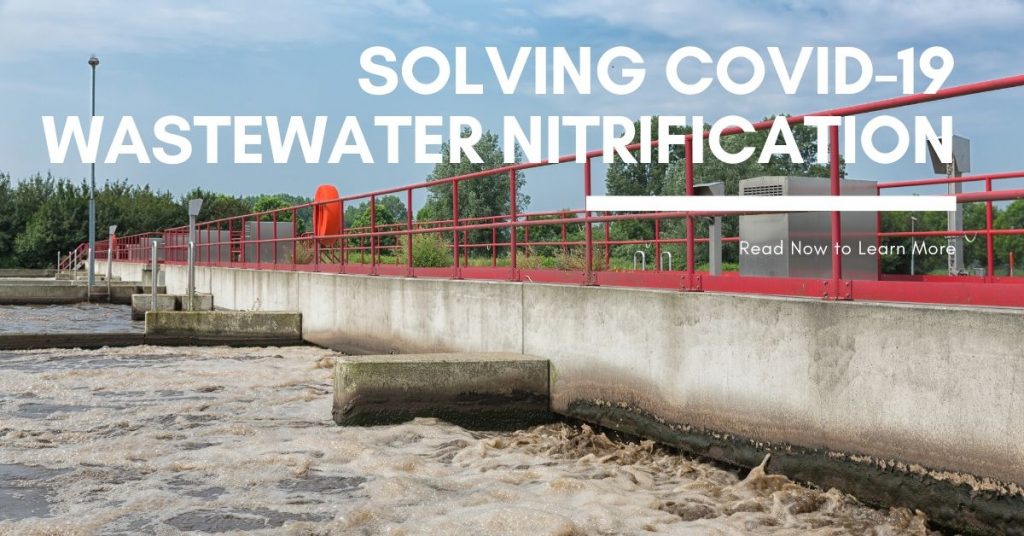Are your effluent ammonia levels increasing?
We are hearing reports of nitrification challenges and other issues from wastewater operators.
[ Webinar ] 3 Ways to Solve Nitrification Amid Covid-19
A possible cause may be an increase in disinfectants and sanitizers being flushed at hospitals, nursing homes, businesses, restaurants and homes due to the growing threat of COVID-19.
Are you experiencing issues with nitrification at your wastewater facility?
Nitrifying bacteria are a highly sensitive lifeform responsible for the essential conversion of ammonia to nitrate.
Healthy populations of nitrifiers thrive only in very specific temperature & pH ranges and are excellent indicators of toxic shock.
Additionally, a high mean cell residence time (MCRT) is required in order to increase the number of nitrifying bacteria in the activated sludge process.
Nitrifiers respond to tiny environmental changes and may be faltering under the increased load of sanitary products to your wastewater facility.
This situation probably will not disappear soon, so operators are having to change their playbook to keep pace.
Case – 6MGD WWTP
One example that we have seen in the field is a 6MGD WWTP (six million gallons per day wastewater treatment plant) that started experiencing a failure of their nitrification process over the past few days.
Influent ammonia levels are still the same as always, it is just not being removed by the nitrifying bacteria.
With a regular treatment regimen, the ammonia levels were still far above the permitted level.
Also, this particular plant is faced with the all-too-common “space equals time” problem.
Given the extra processing time required to remove the ammonia, the plant was starting to run into throughput constraints.
Recommendation to Solve Wastewater Nitrification
In this case, we recommended our Probiotic Scrubber NN® product. We’ve had nothing but great success with it in the past, and it is our go-to product for nitrification problems like what we are seeing today.
Dosing of this product varies depending on specifics at your location, so please consult one of our environmental concierge team to get the right “prescription” for your facility.
BioLynceus provides diverse populations of nitrifying bacteria designed to improve ammonia oxidation and get your wastewater facility back on track.
We provide sole-source proprietary blends of live microbial species that optimize wastewater operations.
ProBiotic Scrubber NN® is engineered to enhance nitrification by using several different species of nitrifying bacteria.
Having ProBiotic Scrubber NN® on hand to reseed your plant quickly when required is a good proactive strategy in these challenging times.
Ordering ProBiotic Scrubber NN® now can provide much needed insurance for your wastewater facility in the event of decreased nitrification.
If this is currently happening at your wastewater facility, we may be able to help you. Contact us at 970-586-3391.


